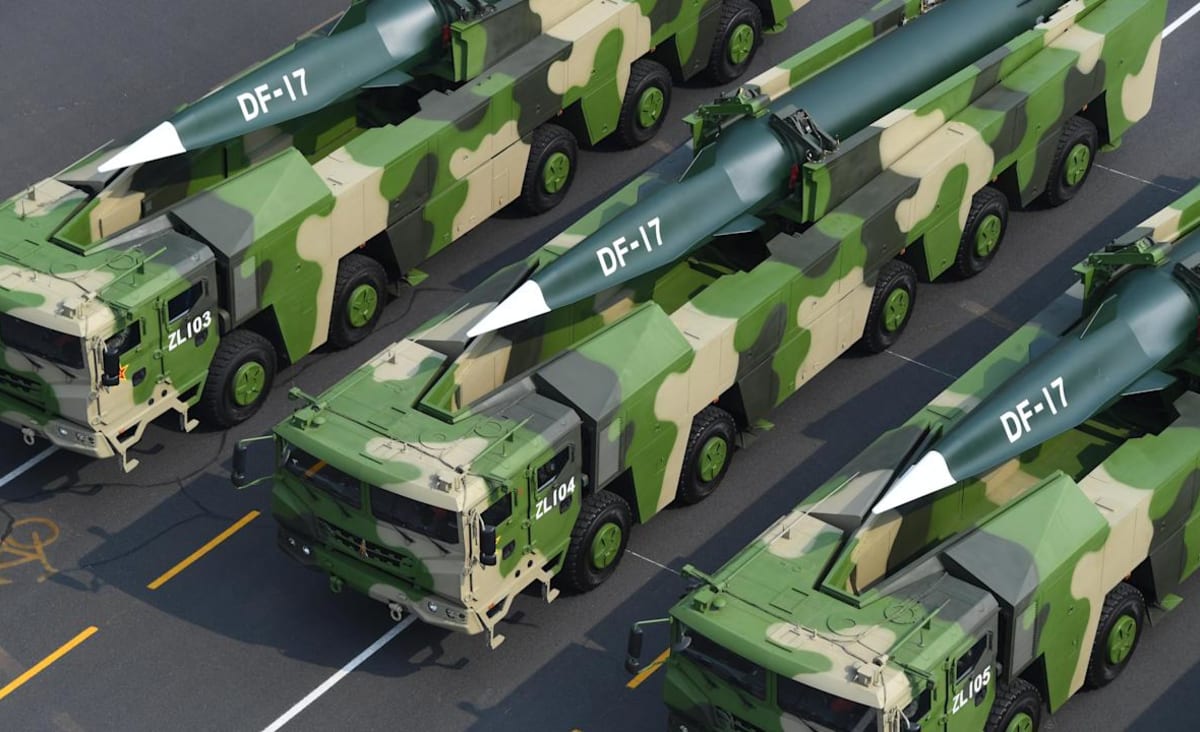
www.yahoo.com
China’s hypersonic glider weapons test threatens to drive new arms race
Analysis: China recently tested a nuclear-capable manoeuvrable missile and Russia and the US have their own programmes Military vehicles carrying the DF-17 hypersonic ballistic missile, capable of flying at five times the speed of sound, are seen during a parade in Beijing in October 2019. Photograph: Xinhua News Agency Handout/EPA A new focus on hypersonic glider weapons, after a reportedly successful Chinese test, is helping drive an arms race that is eclipsing hopes of a return to disarmament
International
A new focus on hypersonic glider weapons, after a reportedly successful Chinese test, is helping drive an arms race that is eclipsing hopes of a return to disarmament by the world’s major powers.
The Chinese test on 27 July, first reported by the Financial Times, involved putting into orbit a nuclear-capable glider, travelling at five times the speed of sound, which then re-entered the atmosphere and performed some turns on its way to a target.
Related: US ‘very concerned’ despite China denials over hypersonic missile
The test suggested that China was further ahead with the technology than was previously known, and despite Chinese denials that it had tested such a weapon, the Biden administration has said it is concerned with the development.
Russia, which has already deployed its version of a nuclear-capable hypersonic glide vehicle, the Avantgard, announced it had conducted exercises in recent days to defend against hypersonic weapons.
The US has stepped up spending on its own hypersonic programme which, unlike its Chinese and Russian counterparts, is designed for conventional warheads only and is still in its testing phase. The Pentagon announced on Thursday that the latest test was called off after the failure of the rocket booster used to accelerate the weapon to hypersonic speeds.
The cluster of news stories about hypersonic gliders has added to the impression that the world is facing a totally new type of weapon with new capabilities. But all intercontinental ballistic missiles (ICBMs) travel at multiples of the speed of sound, and so the capability is almost as old as nuclear weapons themselves.
What makes hypersonic glide vehicles distinctive is that they are more manoeuvrable than the warheads on an ICBM, and therefore potentially more likely to defeat ballistic missile defence (BMD) systems. Some ballistic missile warheads have fins and can manoeuvre to a limited extent, but a glider can perform more pronounced turns, banking against the atmosphere. Jeffrey Lewis, a professor at the Middlebury Institute of International Studies at Monterey, likens gliders to an unmanned space shuttle with a nuclear bomb on board and no landing gear.
Lewis pointed out that making such turns also slows the glider down, making it considerably slower as it approaches its target than an ICBM.
“[The US] looked at gliding re-entry vehicles for our nuclear weapons and decided it wasn’t worth it because they slow down and we thought they’d be easier to shoot down,” he said.
























































